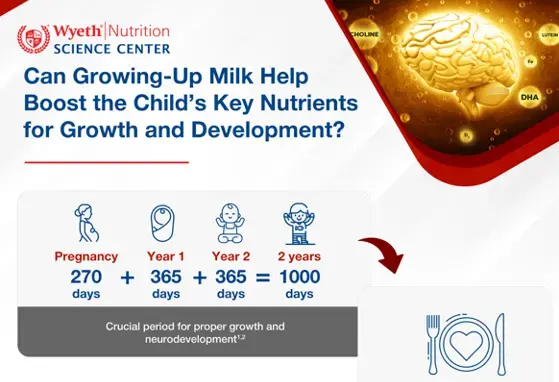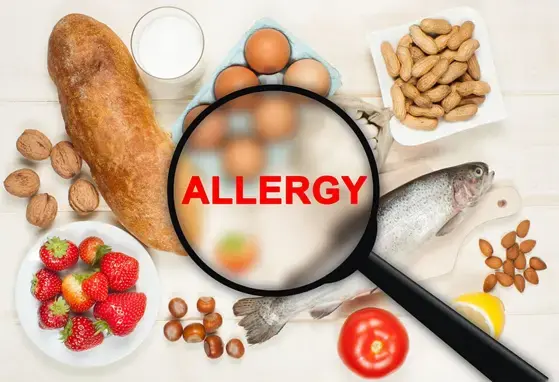Interview with Professor Hania Szajewska – Nutritional Management for Infants and Young Children with Gastrointestinal Infections and Disorders

At a recent interview, Professor Hania Szajewska highlighted the causes of GI infections in infants and young children, and discussed the ESPGHAN's position on the use of dietary interventions, such as lactose-free diets and zinc supplementation, to manage such infections. This article presents highlights from the interview.
- Causes of gastrointestinal (GI) infections in infants and young children, and the role of dietary interventions as recommended by the European Society for Paediatric Gastroenterology Hepatology and Nutrition (ESPGHAN)
- Practical tips on the management of childhood GI infections

Professor Hania Szajewska
Professor and Chair
Department of Paediatrics
The Medical University of Warsaw, Poland
- What are the causes and symptoms of gastrointestinal (GI) infections in young children, and how common is the condition?
- What are the dietary interventions for the management of GI infections in infants and young children?
- When should lactose-free diets be commenced, if they are to be used?
- What is the role of mineral and nucleotide supplementation in children with GI infections and disorders?
- What is the role of prebiotic supplementation in children with GI infections and disorders?
- Similarly, are probiotics implicated in the management of children with GI infections and disorders?
- What are some practical tips for managing infants and young children with GI infections and disorders?
HS: Professor Hania Szajewska
R: Reporter
R: What are the causes and symptoms of gastrointestinal (GI) infections in young children, and how common is the condition?
HS: GI infections, such as acute gastroenteritis, are most commonly caused by viruses, namely, rotaviruses.1 In regions of the world where rotavirus vaccination rates are high, noroviruses prevail.1 Bacterial infections are less common, with the majority of cases caused by four species: Campylobacter jejuni, Salmonella, Shigella and Escherichia coli.1 Acute GI infections are generally defined as the presence of three or more episodes of loose or watery stools in 24 hours,1 with the cardinal symptoms of fever, vomiting and diarrhoea, followed by abdominal pain and cramping. If diarrhoea and vomiting are not properly addressed, the child can develop dehydration, especially in younger populations,1 which is a common cause of death in developing nations.2 The incidence of GI infections depends on the region of the world, ranging from up to two episodes per child a year in developed countries,1 to three to four episodes in less-developed areas.
R: What are the dietary interventions for the management of GI infections in infants and young children?
HS:
For children with GI infections who experience vomiting and diarrhoea, rehydration is the fundamental approach to management and should be commenced immediately.1 Dietary interventions are not usually required in most cases and the child can be fed with what they normally eat,1 however, the child should not be given any foods that they are unfamiliar with.
Recent European Society for Paediatric Gastroenterology, Hepatology and Nutrition (ESPGHAN) guidelines, based on a Cochrane review of more than 2,900 children in over 30 randomized controlled trials, state that if dietary interventions are to be used then lactose-free feeds may be considered in hospitalized children aged younger than 5 years, by reducing the duration of diarrhoea.1,3 The review also found that lactose-free feeds could lower the risk of prolonged or worsening diarrhoea in children with acute gastroenteritis.3
"If dietary interventions are to be used then lactose-free feeds may be considered in hospitalized children aged younger than 5 years, by reducing the duration of diarrhoea." – Professor Hania Szajewska
R: When should lactose-free diets be commenced, if they are to be used?
HS: While a lactose-free diet may exert some benefit in GI infections, it is not currently recommended by the ESPGHAN for routine use in outpatient children with acute gastroenteritis due to insufficient evidence in the literature.1 However, it can be considered if a child experiences no improvement or a worsening of symptoms, or if they become hospitalized. Lactose-free diets may also be immediately commenced together with rehydration therapy to reduce the duration of diarrhoea in children who are concurrently malnourished.
R: What is the role of mineral and nucleotide supplementation in children with GI infections and disorders?
HS: A few meta-analyses have found that the use of zinc can significantly reduce the duration and risk of diarrhoea in children with acute gastroenteritis, with conflicting results on whether it exerts any beneficial effects on stool volume and frequency.4,5 The World Health Organization (WHO) currently recommends 20 mg of zinc supplements daily for 10–14 days (10 mg in infants younger than 6 months) in children with acute diarrhoea last.6 However, in regions where zinc deficiency is rare, no benefit from the use of zinc is expected. The ESPGHAN's position is that it may be used for the management of acute gastroenteritis in children younger than 6 months residing in areas where zinc deficiency is common.1 Zinc may also be used in any child who experiences recurrent episodes of diarrhoea, or in those who are malnourished.
Nucleotide supplementation for the management of acute gastroenteritis is not currently addressed by the ESPGHAN. However, there are some studies in the literature which have shown that 72 mg/L of nucleotides added to infant formulas are able to prevent acute diarrhoea: infants supplemented with formula containing nucleotides had a significantly lower risk of developing diarrhoea from 8 to 28 weeks of life (25.4% reduction in risk; p = 0.05), compared to those who received non-supplemented formula.7,8
"The WHO currently recommends 20 mg of zinc supplements daily for 10–14 days (10 mg in infants younger than 6 months) in children with acute diarrhoea, however, in regions where zinc deficiency is rare, no benefit from the use of zinc is expected."
– Professor Hania Szajewska
R: What is the role of prebiotic supplementation in children with GI infections and disorders?
HS: The use of oligosaccharide prebiotics have been demonstrated to stimulate the growth of beneficial bacteria in the GI tract, namely, Bifidobacteria and Lactobacillus,9 and some studies have shown that specific prebiotic mixtures, such as galacto- and fructo-oligosaccharides (GOS, FOS) can reduce the overall risk of developing any infection (upper respiratory tract infections, ear infections or GI infections).10,11 However, there is still insufficient evidence to support the use of prebiotics in the management of GI infections, and this is reflected in the updated ESPGHAN guidelines which do not recommend prebiotic supplementation in children with acute gastroenteritis.1
This does not mean that prebiotics are ineffective for GI infections, but rather, it signifies the sheer lack of clinical data in the literature: it is estimated that the depth and breadth of research in the field of prebiotics is approximately 10 years behind probiotics, and more well-designed and well-conducted randomized controlled trials are urgently required to determine its clinical potential. What is more certain, however, is that the use of prebiotics is safe – the ESPGHAN states that prebiotics do not raise safety concerns with regard to growth and adverse effects when used in healthy children.12
R: Similarly, are probiotics implicated in the management of children with GI infections and disorders?
HS: The ESPGHAN currently recommends three probiotics – Lactobacillus rhamnosus GG (LGG), Saccharomyces boulardii and the Lactobacillus reuteri DSM 17938 (Figure 1) – as the only species to be considered for the management of children with acute gastroenteritis, to be used in conjunction with rehydration therapy.13 These three probiotics are associated with a reduction in the duration of diarrhoea.13
Probiotics have also been studied in other GI disorders: recent meta-analyses concluded that S. boulardii and LGG were effective in preventing antibiotic-associated diarrhoea in children.14,15 Probiotics such as the combination of Lactobacillus and Bifidobacterium also have potential in the prevention of necrotizing enterocolitis (NEC) in children, especially in settings where the risk of NEC is high.16 However this is not currently endorsed by the ESPGHAN due to a lack of robust evidence. Available scientific data suggest that the administration of currently evaluated probiotic and/or prebiotic-supplemented formula to healthy infants does not raise safety concerns with regard to growth and adverse effects.12
“Available scientific data suggest that the administration of currently evaluated probiotic and/or prebiotic-supplemented formula to healthy infants does not raise safety concerns with regard to growth and adverse effects.”
– Professor Hania Szajewska
Figure 1. Three probiotics recommended by the ESPGHAN to be considered for the management of acute gastroenteritis in children13
Probiotics with a positive recommendation
| Strain(s) | Quality of Evidence | Recommendation | Dose |
|---|---|---|---|
| Lactobacillus rhamnosus GG (LGG) | Low | Strong | ≥1010 CFU/day (typically for 5-7 days) |
| Saccharomyces boulardii | Low | Strong | 250 to 750 mg/day (typically for 5-7 days) |
| Lactobacillus reuteri DSM 17938 | Very low | Weak | 1x108 to 4x108 CFU/day (typically for 5-7 days) |
CFU, colony forming units
Practical tips for healthcare professionals
|
Summary:Gastrointestinal infections are common occurrences in children, with the majority of cases caused by rotavirus or noroviruses. Symptoms include vomiting and diarrhoea, and dehydration may ensue if these symptoms are not addressed. Mainstay treatment is with rehydration therapy, accompanied by optional dietary interventions – such as supplementation with probiotics and zinc. Prebiotics and nucleotides are additional options to consider, but these interventions were not addressed in the ESPGHAN guidelines. Lactose-free diets may also be used in hospitalized and malnourished children, and have been shown to reduce the duration of diarrhoea. While more studies are required to determine the utility of various dietary interventions, selecting the treatment based on the current evidence is crucial to ensuring optimal outcomes in children with gastrointestinal infections. |
WYE-EM-268-SEP-15
Reference
- Guarino A, et al. J Pediatr Gastroenterol Nutr 2014;59:132-152.
- MacDonald SE, et al. Asia Pac J Public Health 2007;19:34-39.
- MacGillivray S, et al. Cochrane Database Syst Rev 2013;10:CD005433.
- Patro B, et al. Aliment Pharmacol Ther 2008;28:713-723.
- Patel A, et al. PLoS One 2010;5:e10386.
- Bajait C, et al. Indian J Pharmacol 2011;43:232-235.
- Carver JD. Acta Paediatr Suppl 1999;88:83-88.
- Yau KI, et al. J Pediatr Gastroenterol Nutr 2003;36:37-43.
- Lin CS, et al. Biomed J 2014;37:259-268.
- Chatchatee P, et al. J Pediatr Gastroenterol Nutr 2014;58:428-437.
- Arslanoglu S, et al. J Nutr 2007;137:2420-2424.
- Braegger C, et al. J Pediatr Gastroenterol Nutr 2011;52:238-250.
- Szajewska H, et al. J Pediatr Gastroenterol Nutr 2014;58:531-539.
- Szajewska H, et al. Aliment Pharmacol Ther 2015;41:1237-1245.
- Szajewska H, et al. Aliment Pharmacol Ther 2015 (In Print).
- Deshpande GC, et al. BMC Med 2011;9:92.
If you liked this post you may also like

Infographic - Can Growing-Up Milk Help Boost the Child's Key Nutrients for Growth and development?

The Learning Lead - Volume 2, 2024: "Can Growing-Up Milk Help Boost The Child’s Key Nutrients for Growth and Development?"

[Guideline Summary] S3 guidelines on allergy prevention

[Literature library] Coronavirus Disease 2019 (COVID-19) mRNA-based vaccination and breastfeeding